The next morning we weigh anchor at five o’clock in the morning and set course for the South Shetlands. It’s about 100 miles to Deception Island. We have zero wind, it’s gray and the water is as smooth as glass.
As on the way south, we encounter many whales again in the Gerlache Strait. Who knows, maybe the four from the previous evening are among them?
During Peter’s and my watch in the evening it clears up, we finally have enough wind and can set sail in the evening sun. Mr. Perkins has a break, we have a big grin on our faces. The night is clear, the starry sky is gigantic, the Milky Way stretches out in a wide arc above us, even the two Magellanic Clouds are visible.
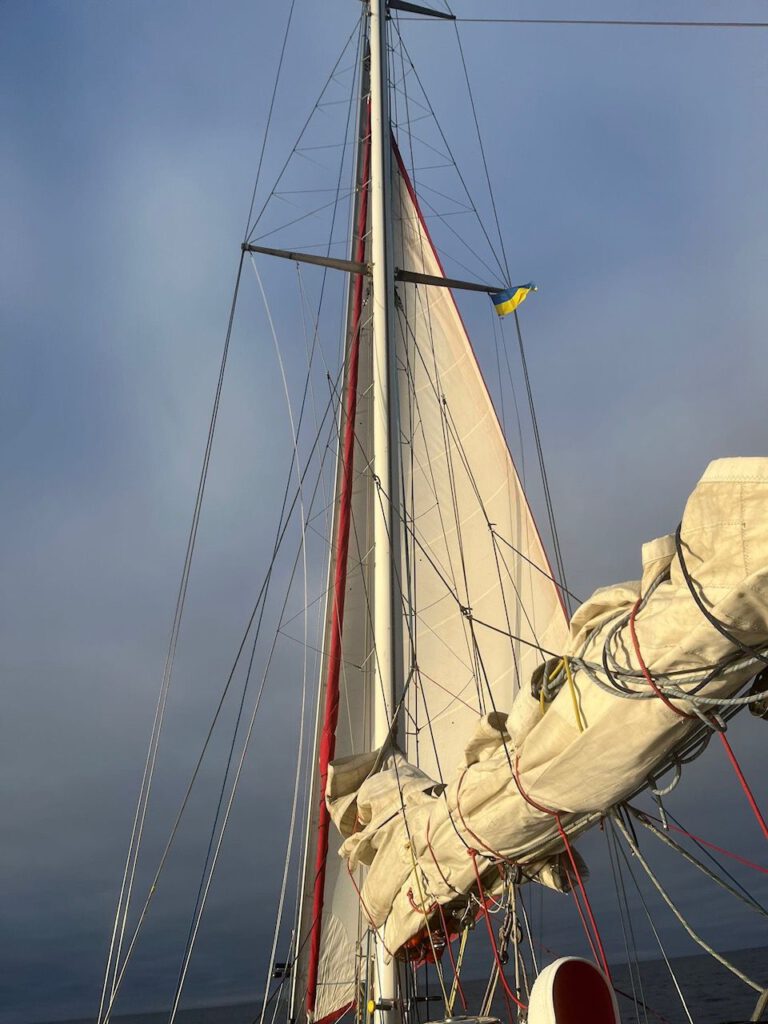
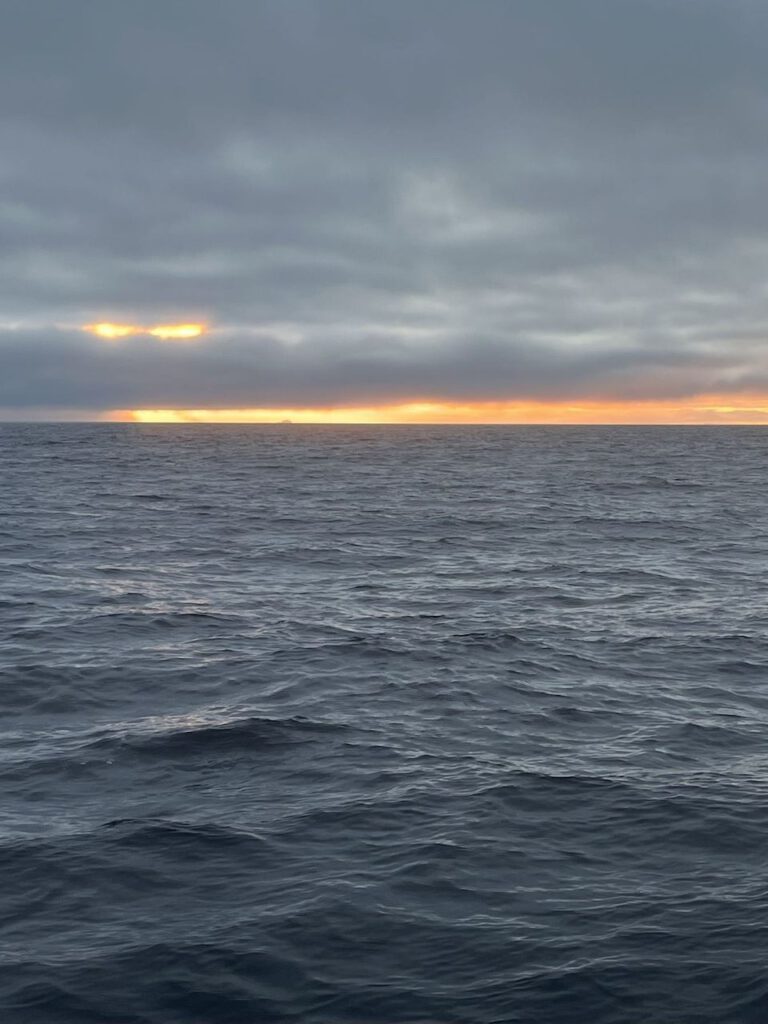
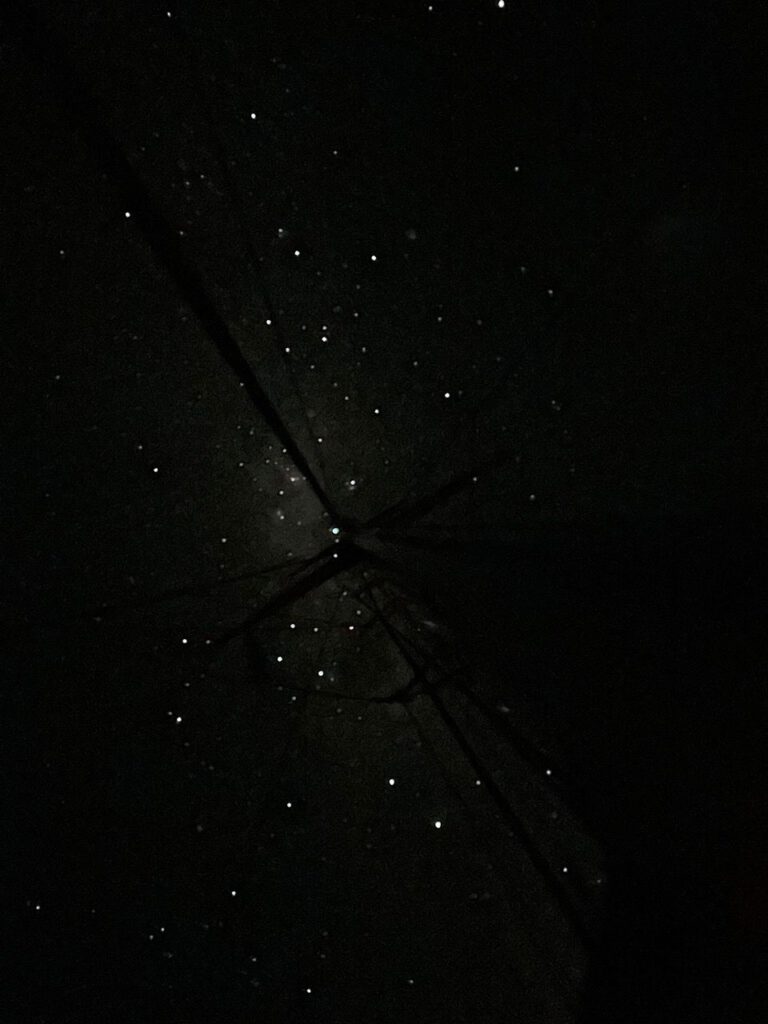
In the darkness, we pass the narrow entrance – known as Neptune’s Bellows – to Deception Island at around midnight. On the left, a beacon marks the passage, which is only a few hundred meters wide; on the right, the shadow of a steep rock face looms out of the darkness. At one o’clock we drop anchor in Telephone Bay.
Deception Island is a volcanic island, the summit of a collapsed volcanic crater that rises above the surface of the sea. An almost circular caldera, flooded by the sea, with a diameter of approx. 6 miles. The volcano is still active, but the last eruption (1970) was a good 50 years ago. During an eruption in 1967, an English and two Chilean research stations were severely damaged and subsequently abandoned.
Between 1912 and 1931, the world’s southernmost potion factory was operated in Whalers Bay. The remains of this Norwegian whaling station, as well as the remains of the abandoned British research station B, can still be seen today.
On Saturday morning, fog and sun bathe everything in a mystical light. We don’t see much of the island – just a black strip of beach in the bay where we are anchored, calm and protected. The silvery-grey veil seems to lift a little, so we decide to take a short walk up the hills around Telephone Bay in the morning. On the beach, we are greeted by two lone Weddell seals in the fine black volcanic sand. The landscape looks bleak and inhospitable, consisting – at least in this part of the island – of mostly black volcanic rock and rubble. We climb a chain of hills and enjoy an hour and a half of exercise in this seemingly lifeless lunar landscape. Unfortunately, the rest of the island remains mysteriously engulfed in fog.
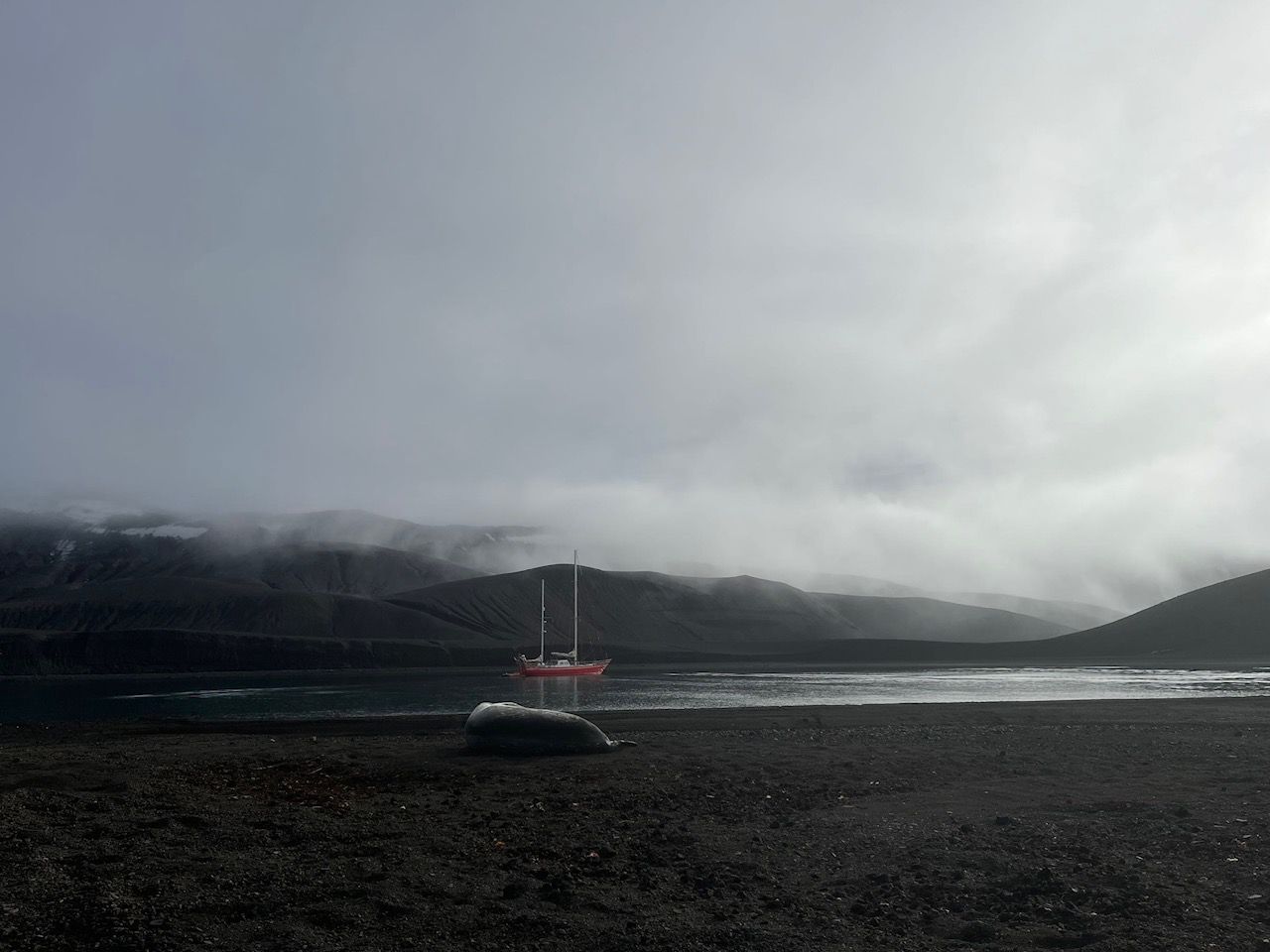
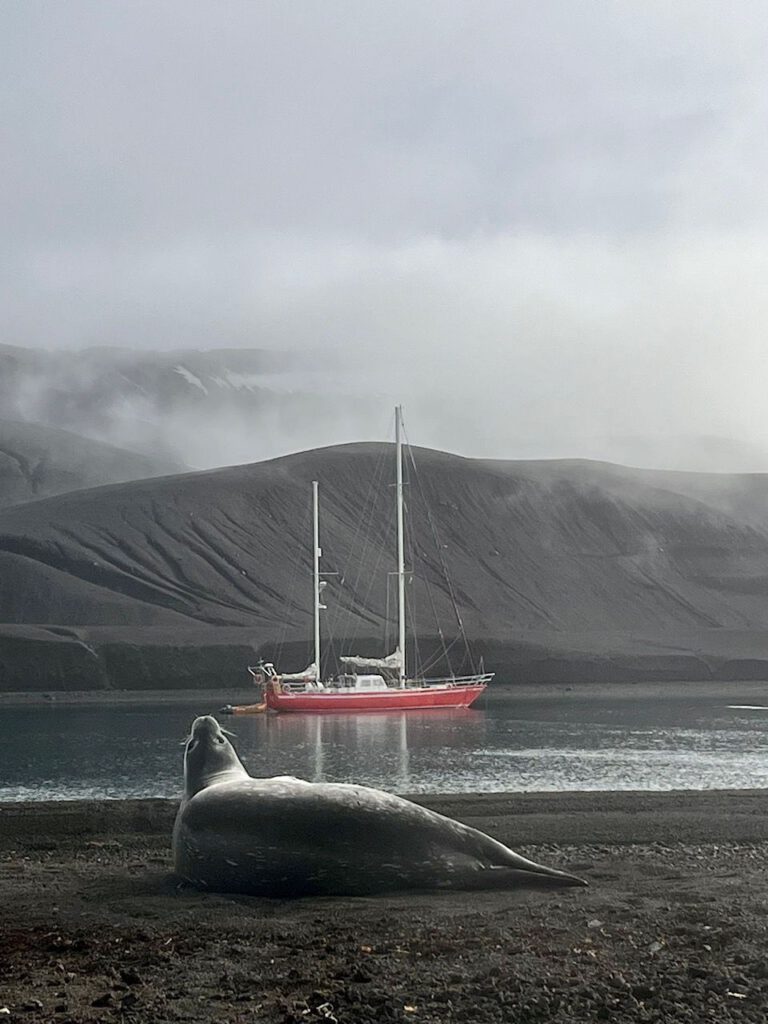
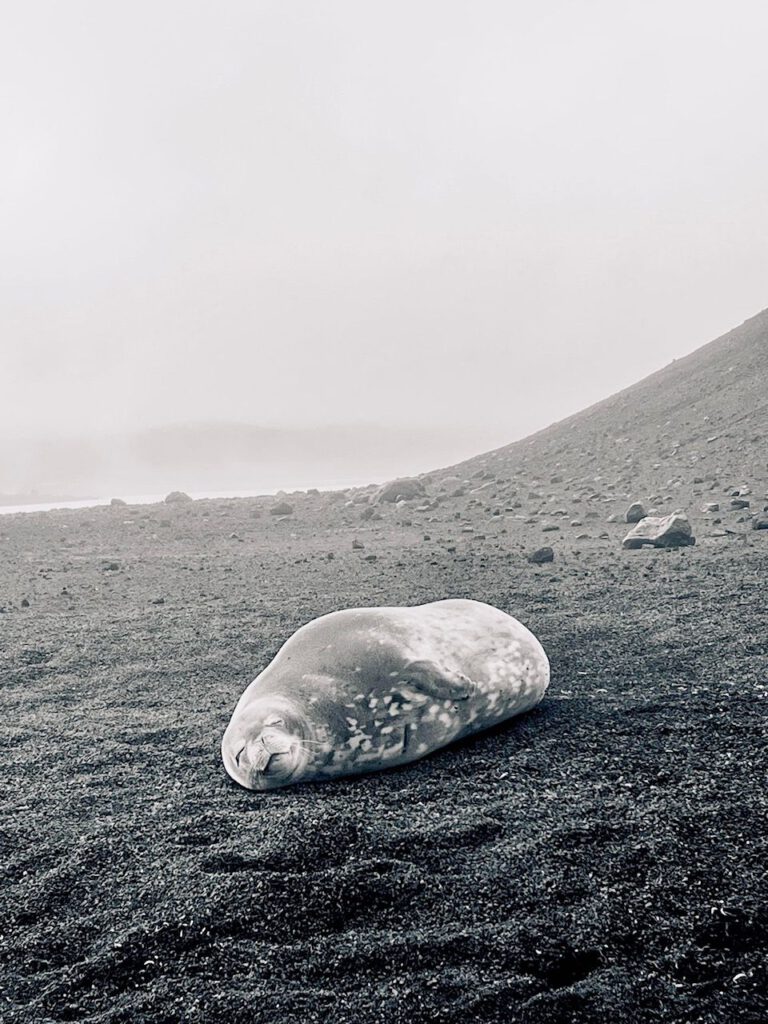

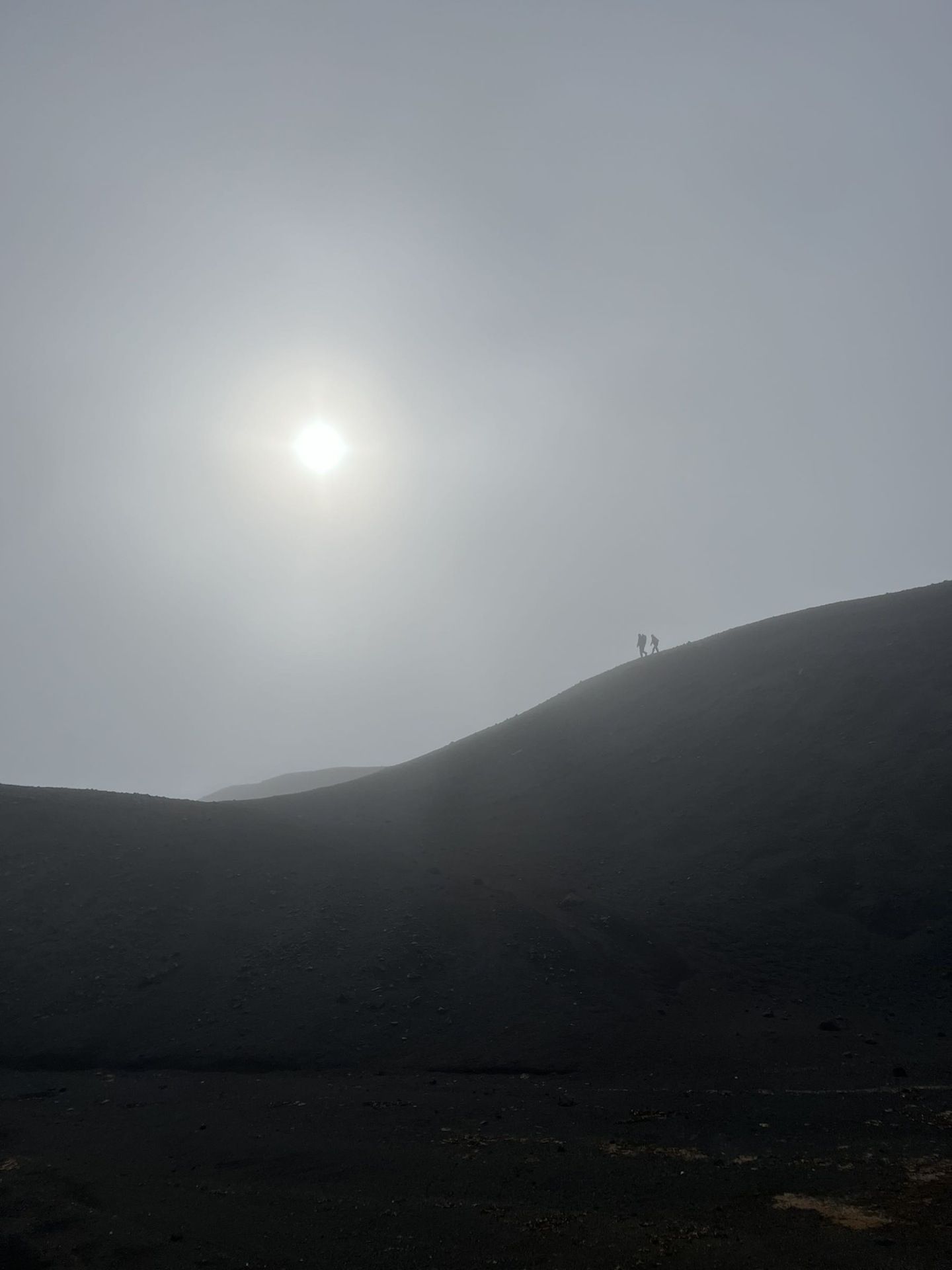
A cruise ship had registered for the morning in Whalers Bay. We don’t get to see it, but we hear on the radio that it is on its way again, through Neptune’s bellows – which can only be passed by one ship at a time. In the afternoon, we have the hot spot of Whalers Bay to ourselves.
Back on the Selma, we move to Whalers Bay, just 6 miles away, anchor and take our time for an extensive shore excursion. Everyone swarms out, some on their own, others in groups. Fortunately, the sun eventually makes it through the fog and the white clouds clear, revealing the countless remnants of the whaling era and the remains of the abandoned British research station.
Numerous fur seals populate the black beach. Many are lounging around lazily, others are involved in small scuffles with each other. Apparently it’s mostly about who gets to lie on which piece of sand. A few penguins are also out and about at the water’s edge. I meet a funny pair of a Gentoo and a Chinstrap penguin (Gentoo and Chinstrap penguin) walking together on the beach.
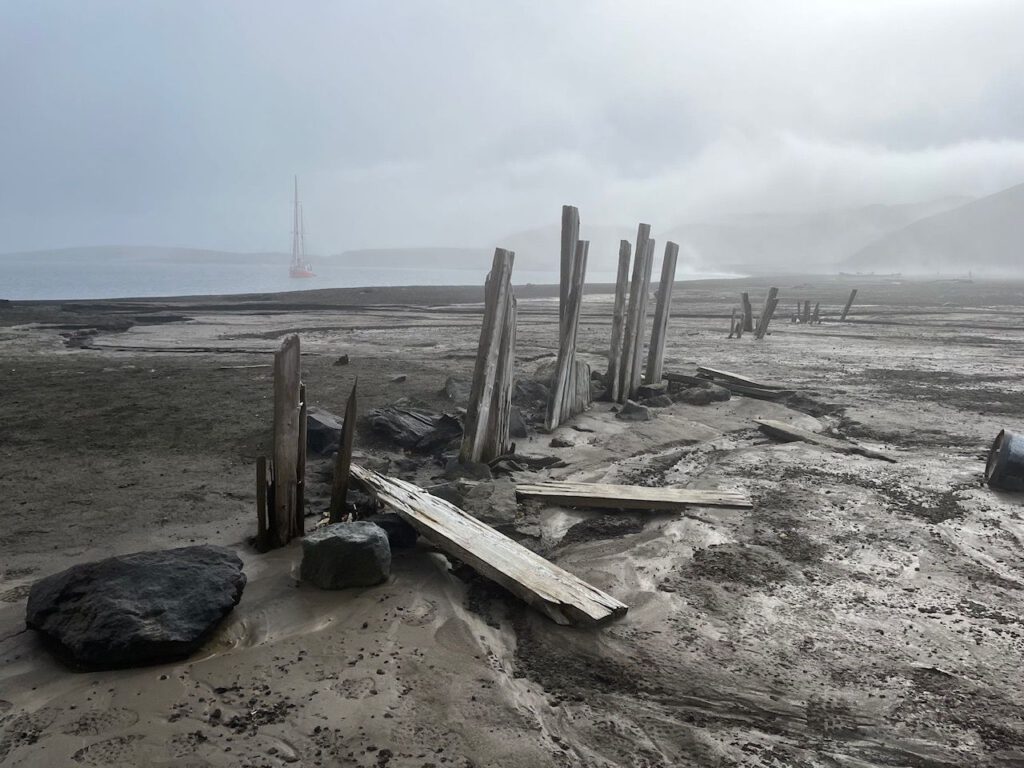

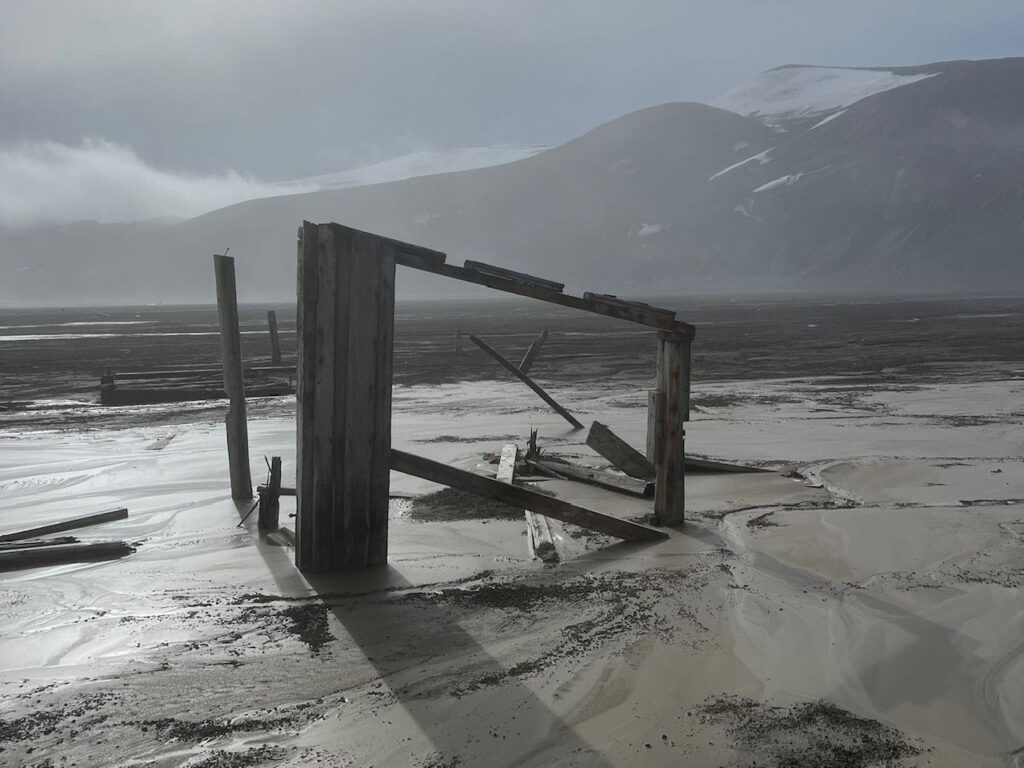
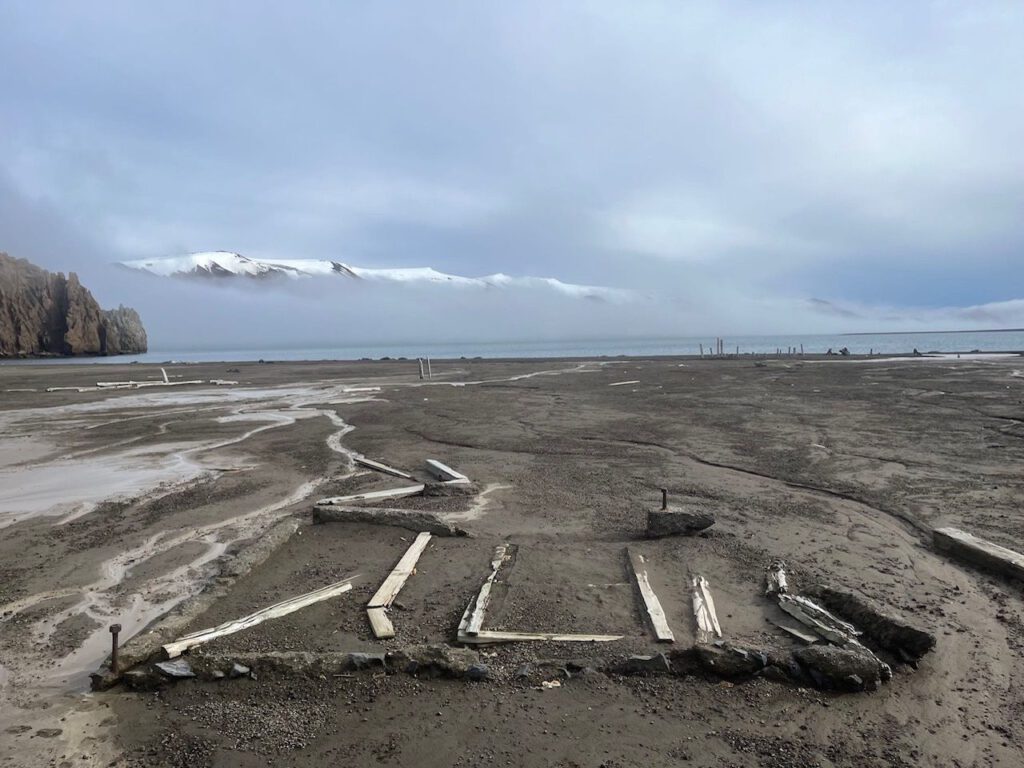
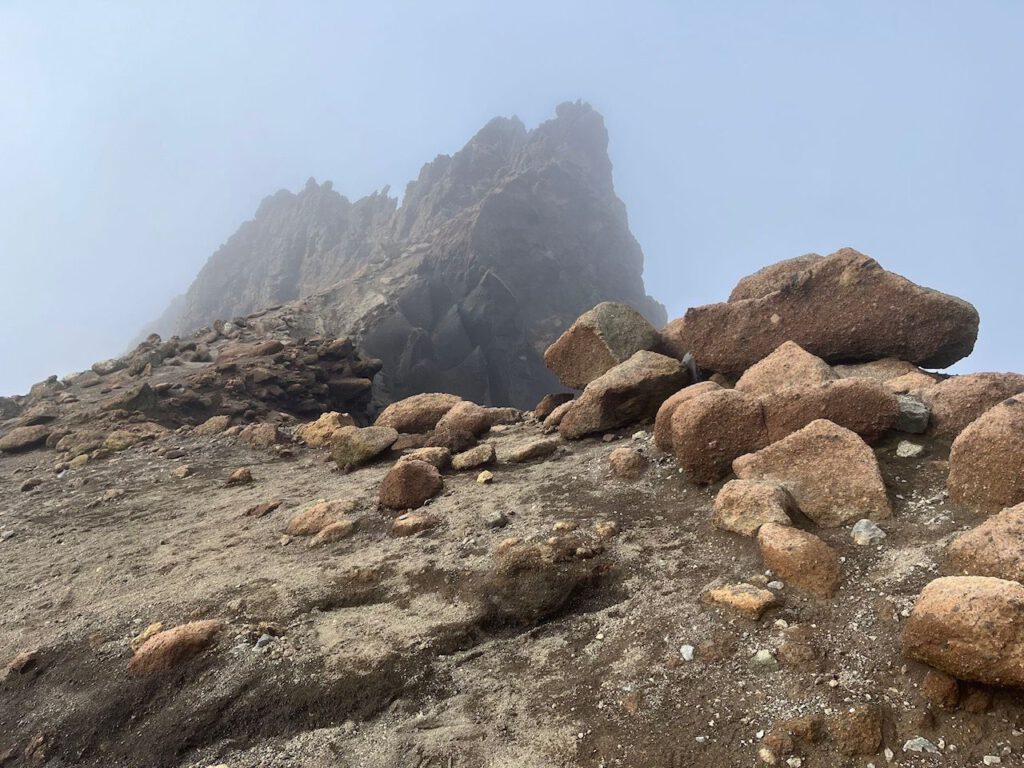
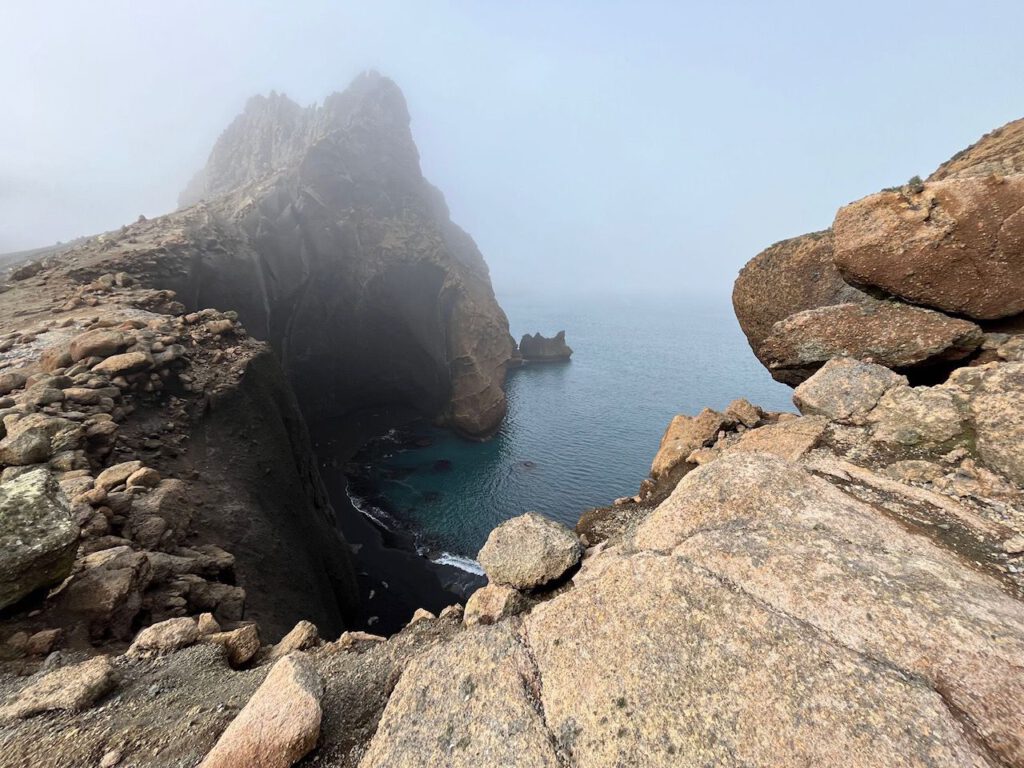
I myself first climb a small hill up to a gap between steep cliffs – at the top, the view through Neptune’s Window opens out onto the vast ocean. Deep below, a powerful swell rolls in, smashes against the cliffs, and there are plenty of seals lying in small bays.
Scattered in the sand of Whalers Bay, partly covered by volcanic ash, you discover wooden debris and the remains of former buildings, barracks, waterboats … a few whale bones, a former floating dock …
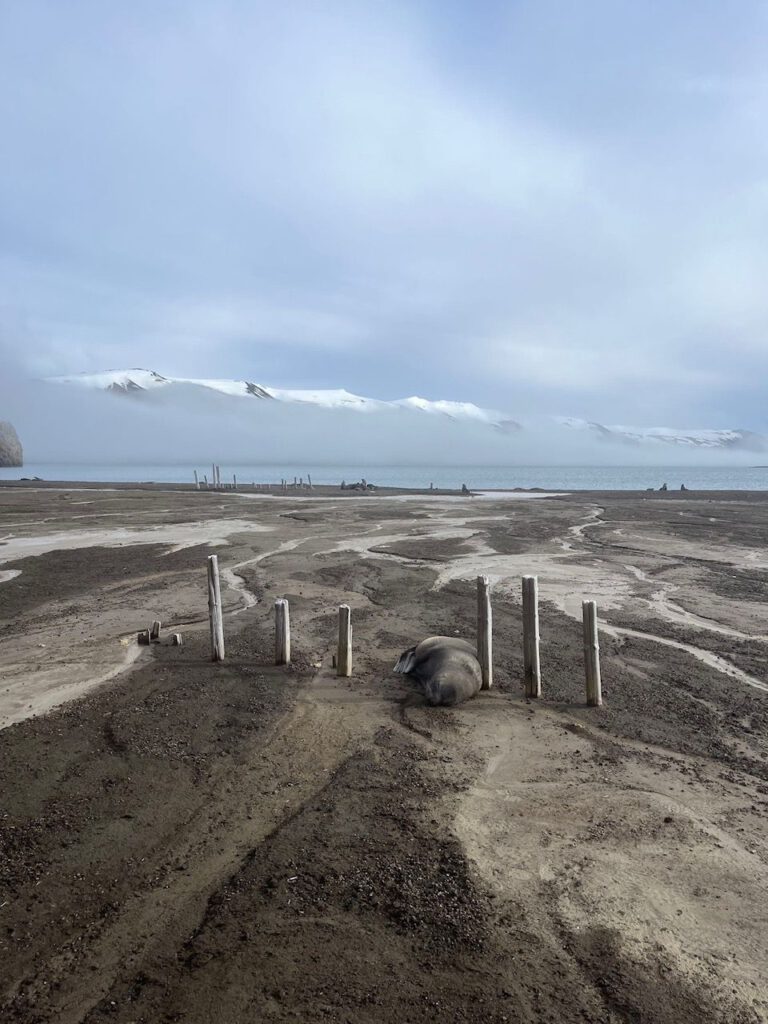
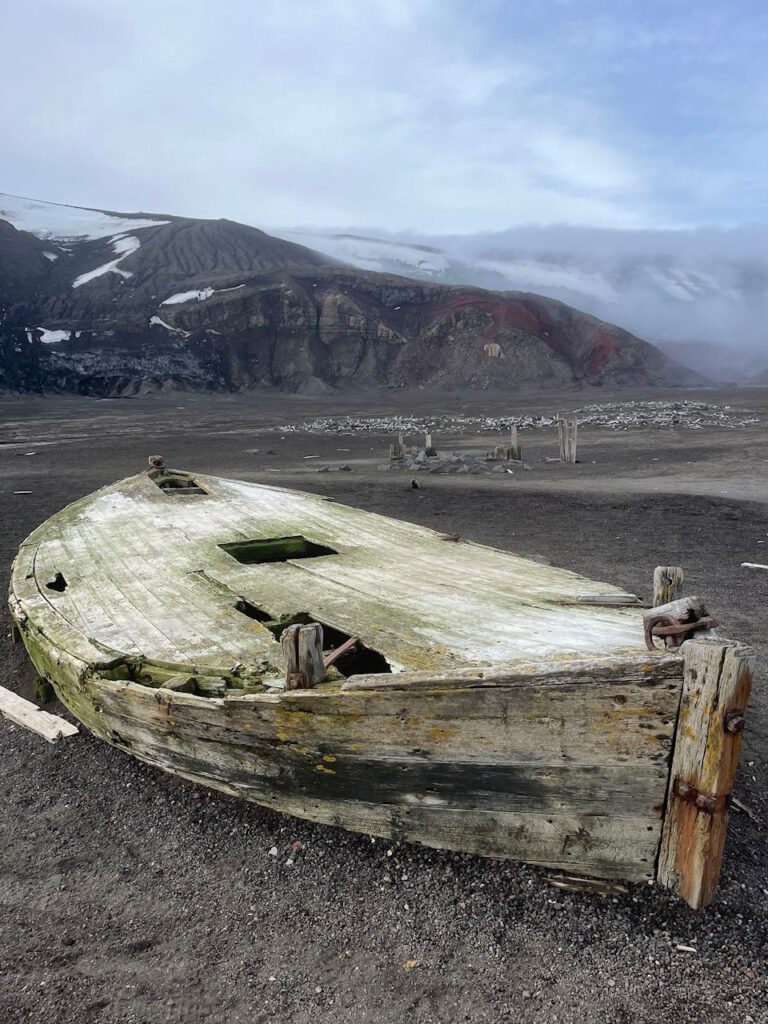
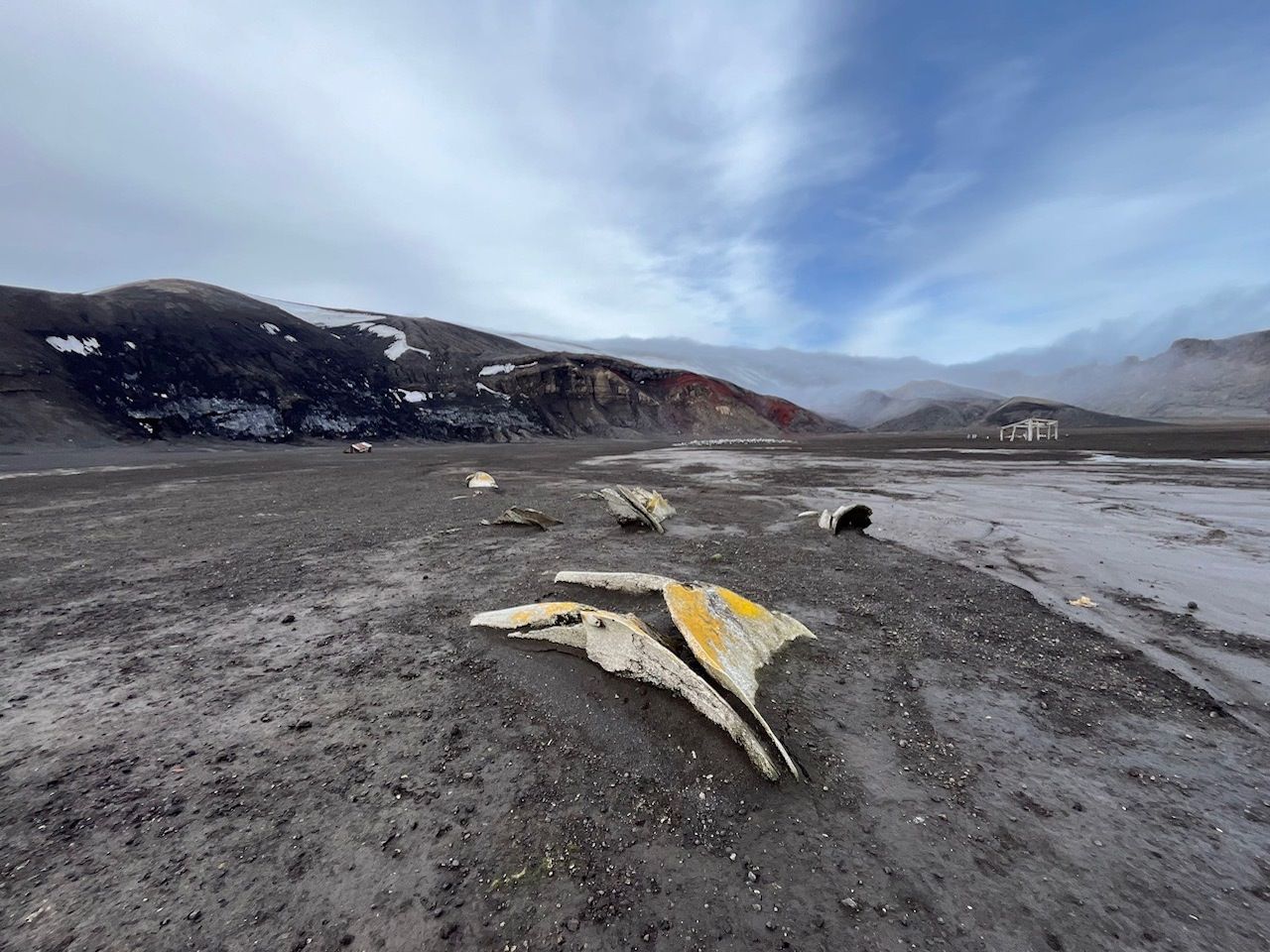
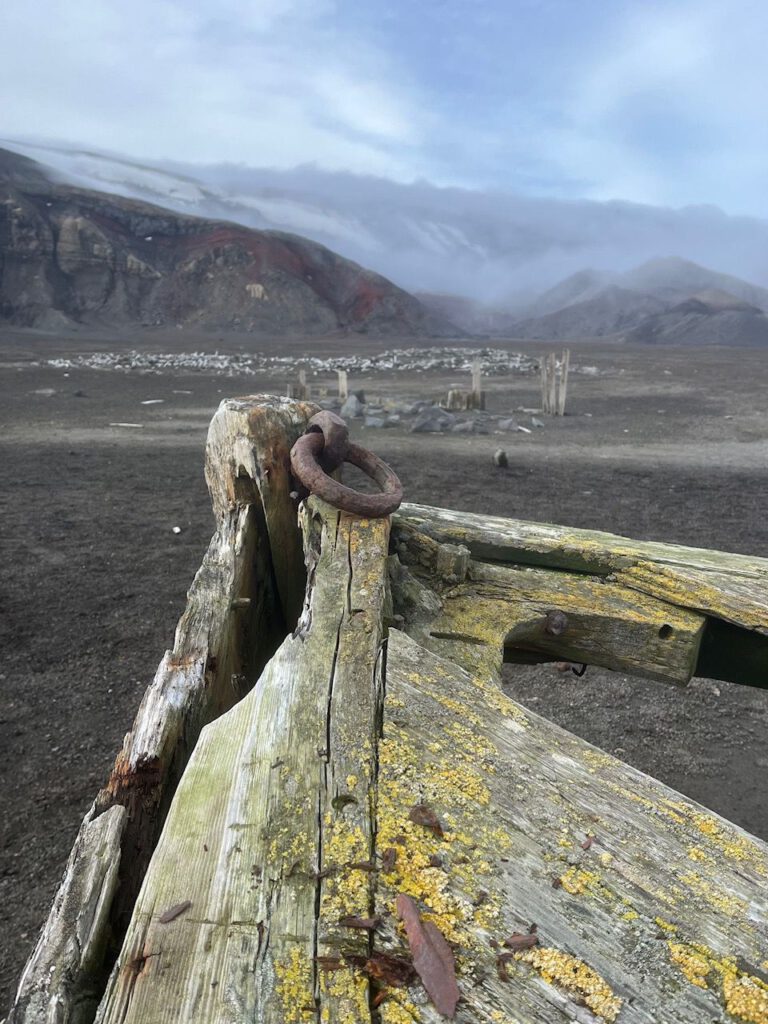
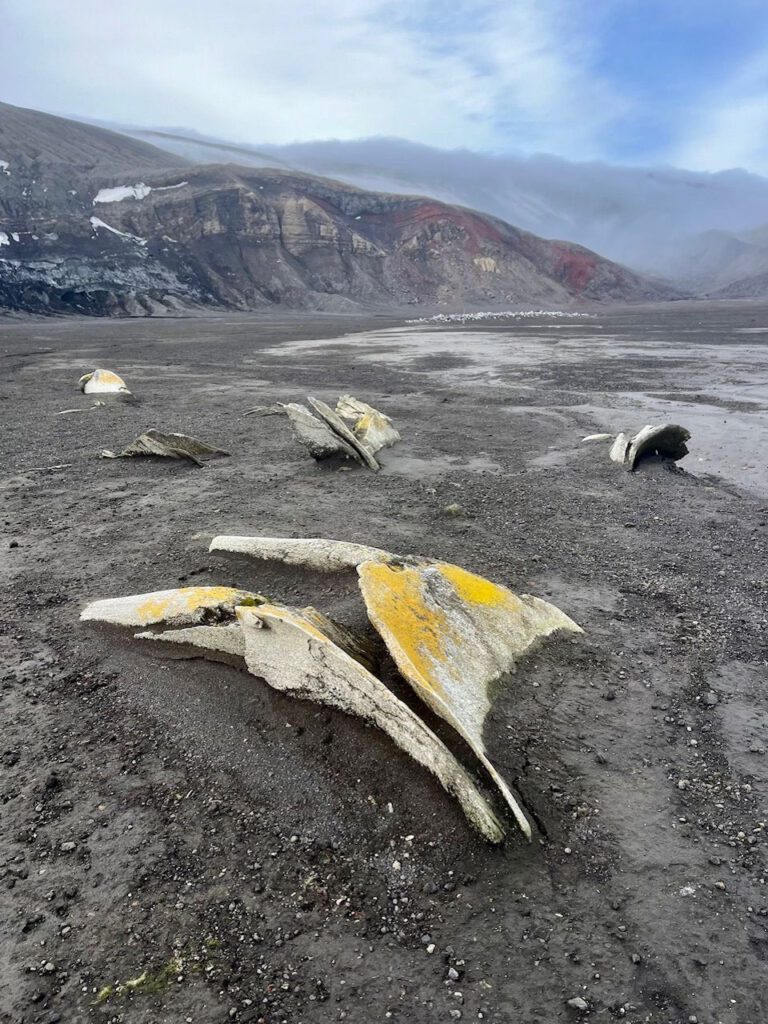
Water vapor mixes with the clearing fog along the edge of the beach. Hot water from the volcanic soil mixes with the cold water of the crater lake, smelling of sulphur. If you dip your hand in, it is almost boiling hot in places.
The surroundings have a mystical, morbid quality, as if from another planet. In the background of this scenery, which looks like a witch’s kitchen, there are lots of huge tanks (whale oil, fuel), ovens, stoves and other metal objects, some of which look very futuristic, rusting away. I feel like I’m in a Jules Verne movie.
Old buildings battered by wind, weather and the harsh climate are falling into disrepair, silvery weathered wood everywhere, here and there lichens colonize and conquer this new habitat. Far behind are two individual wooden crosses, remnants of the small cemetery covered in ashes.
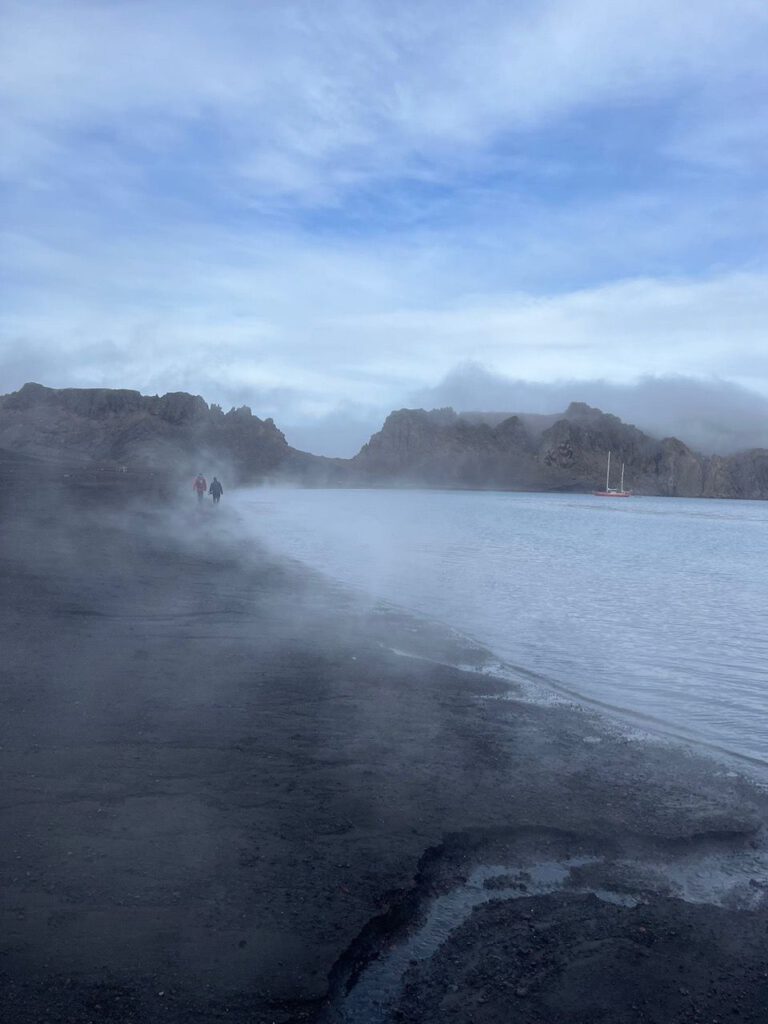

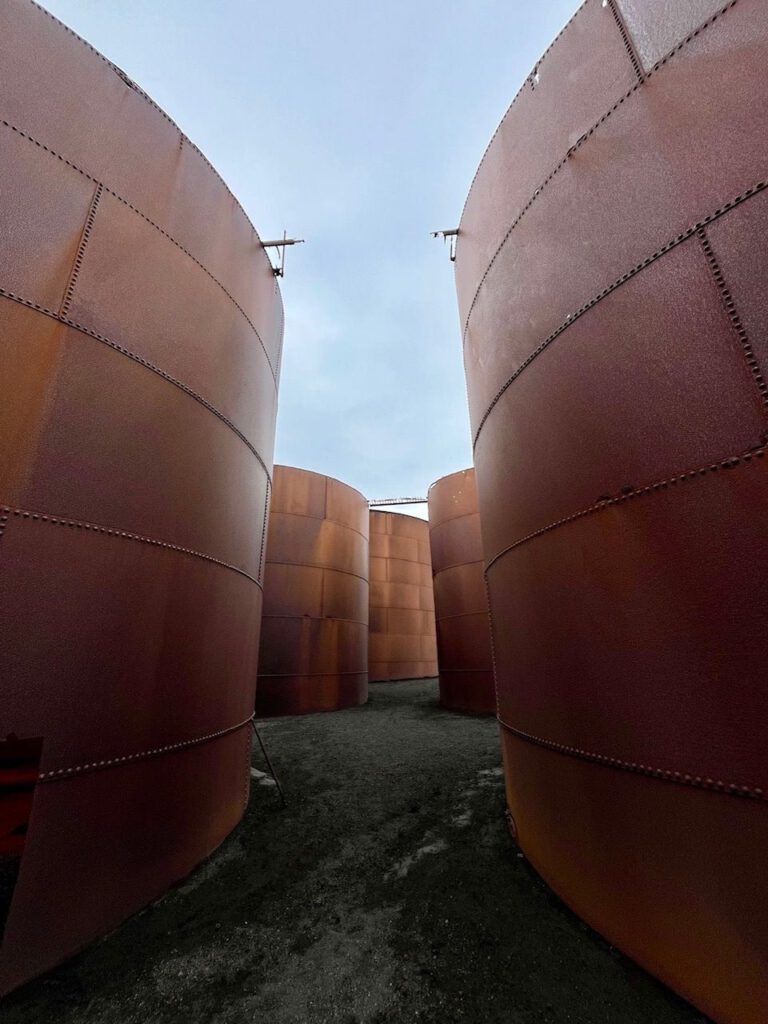
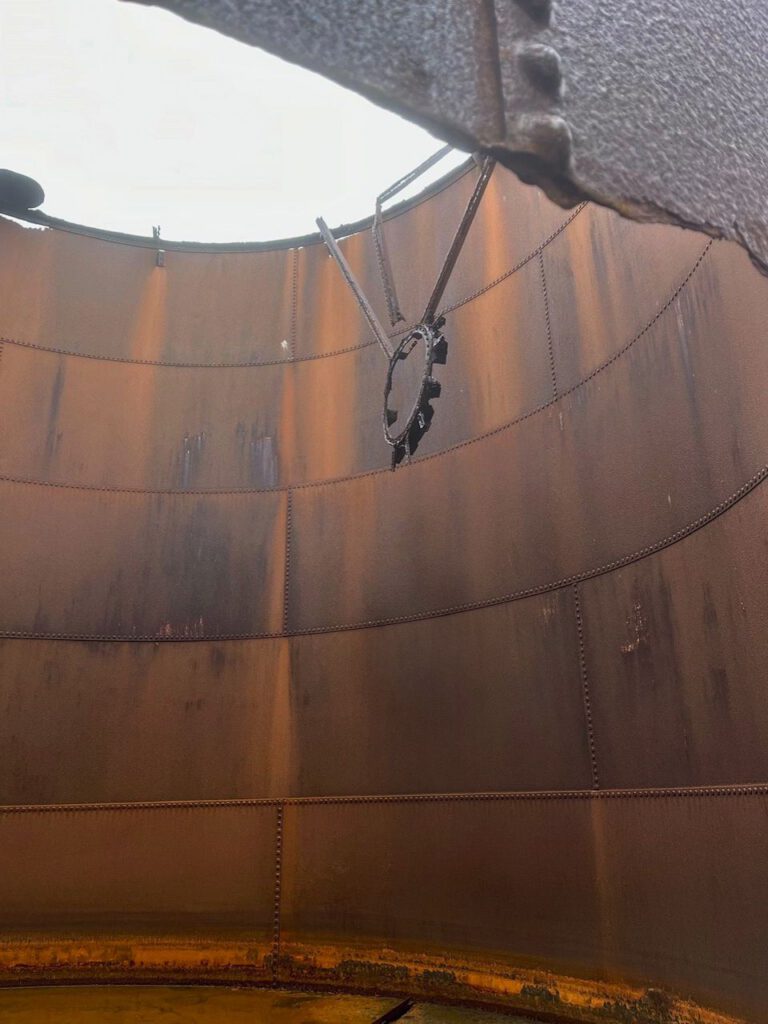
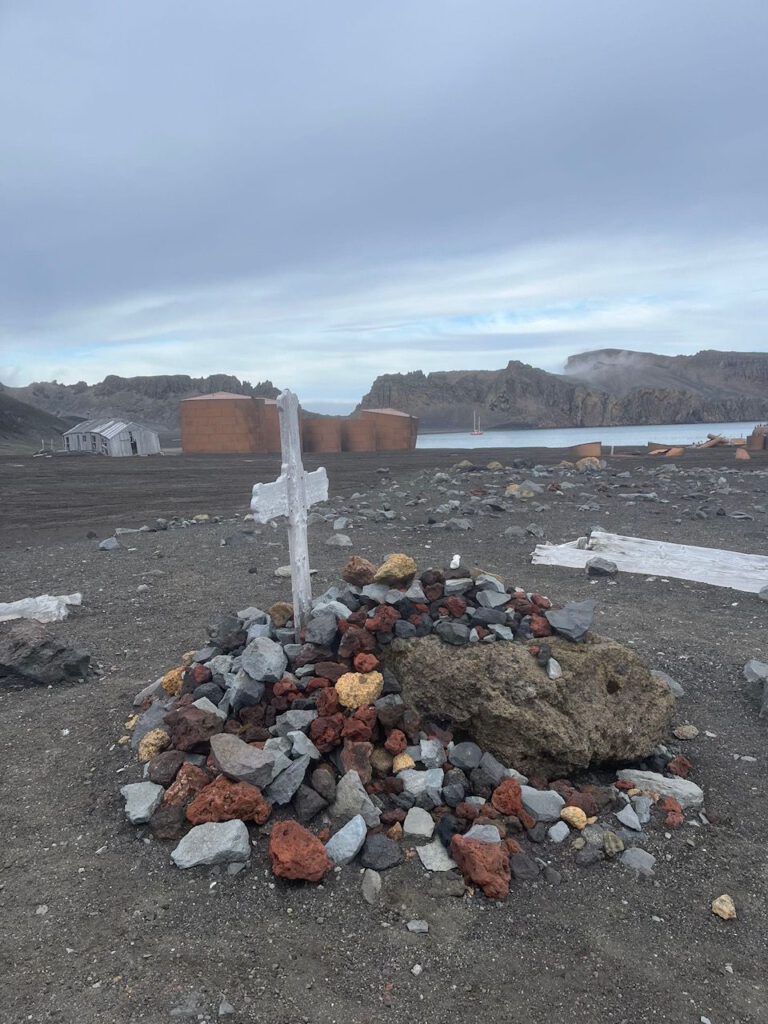
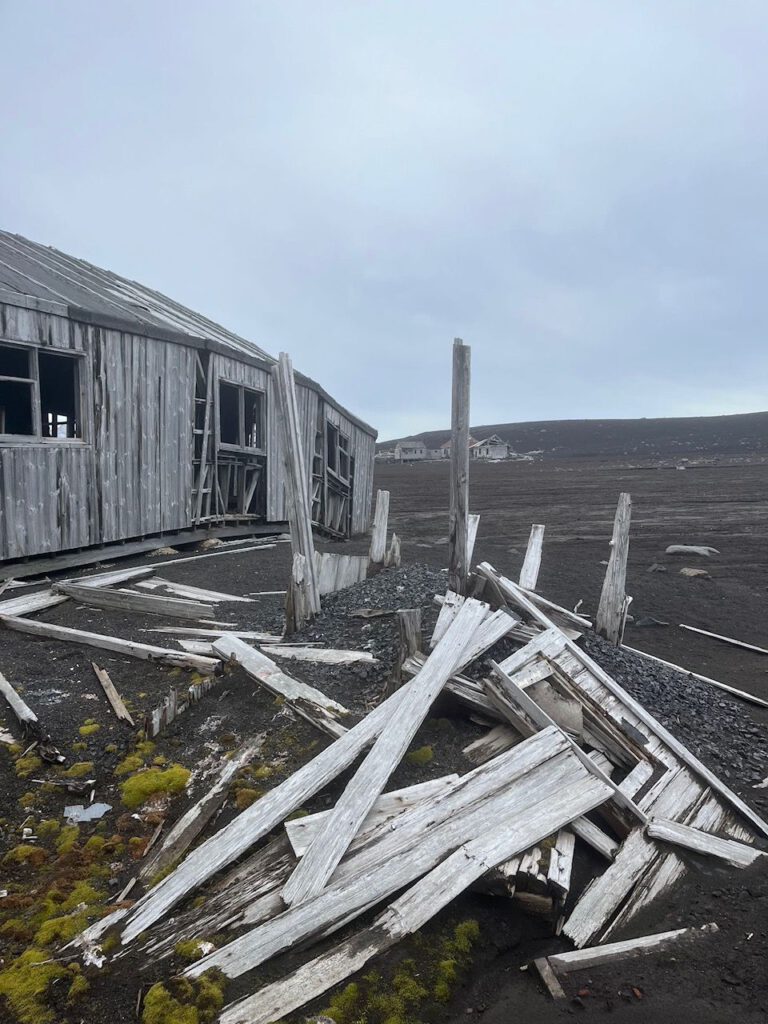
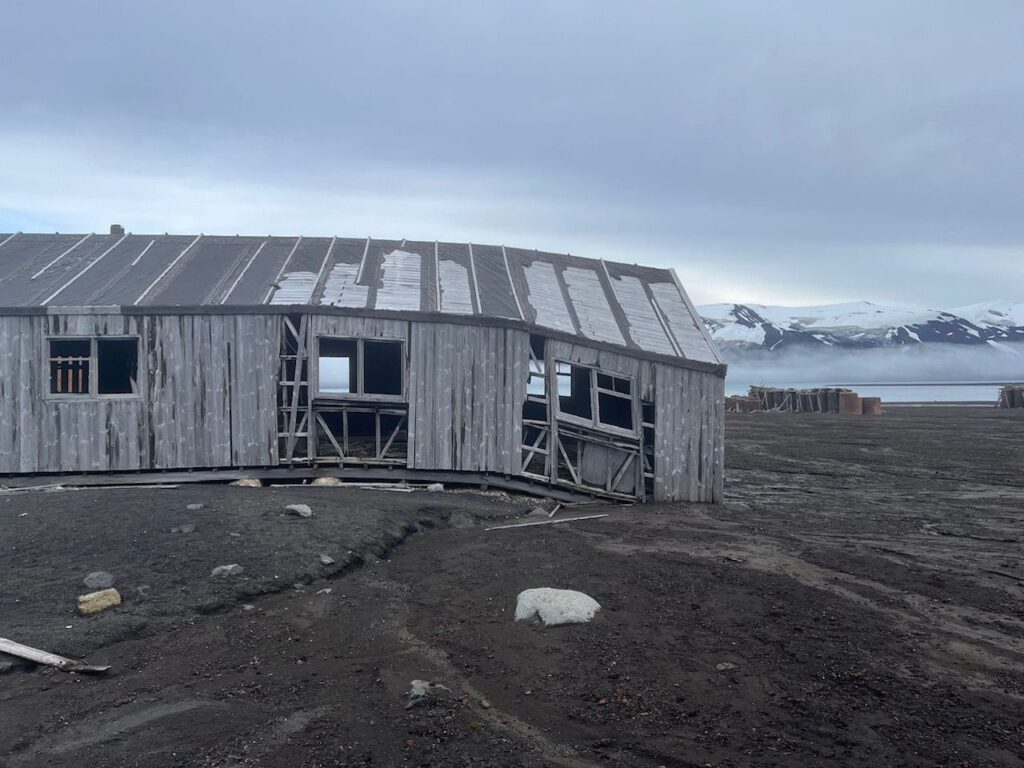
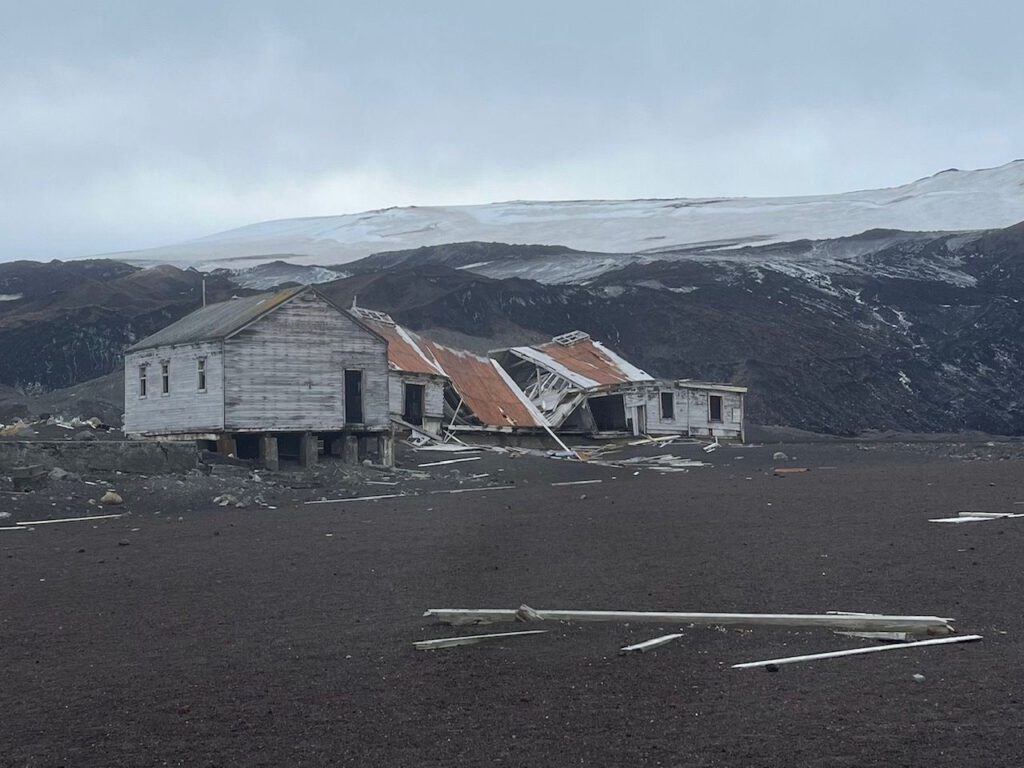
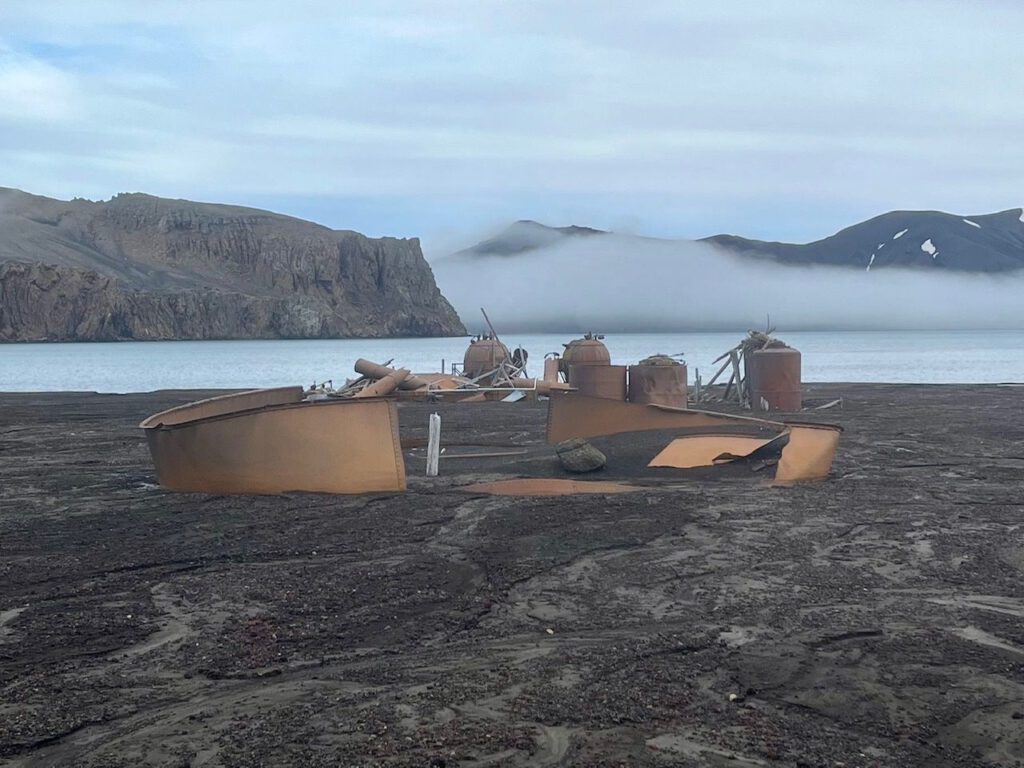
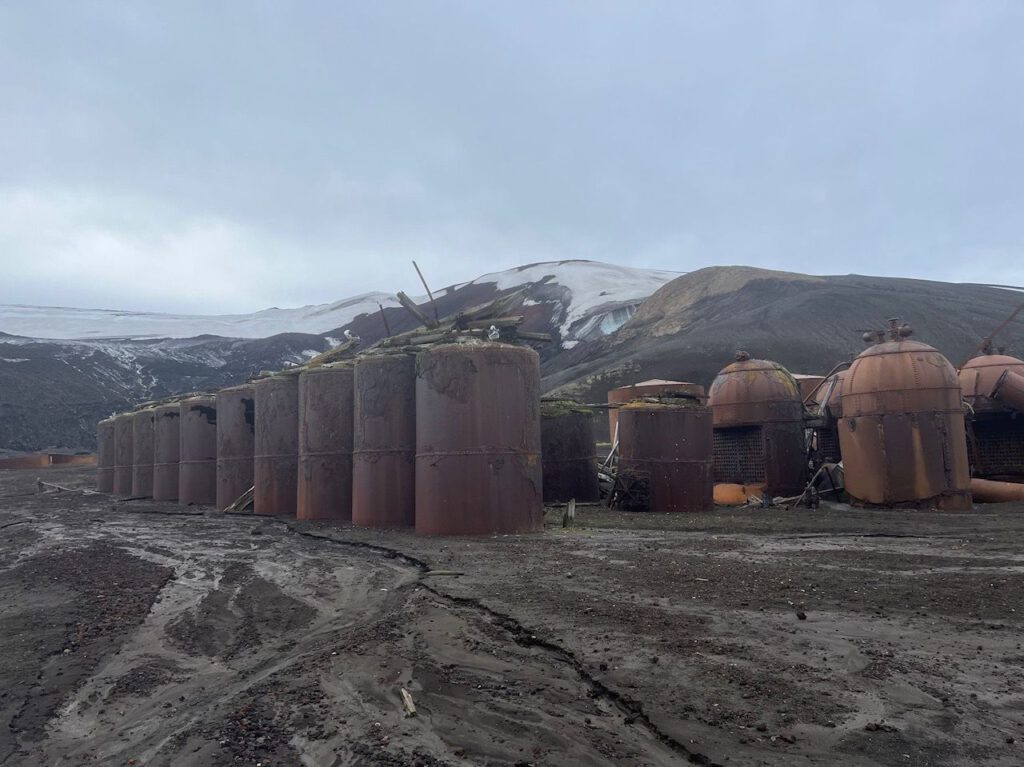
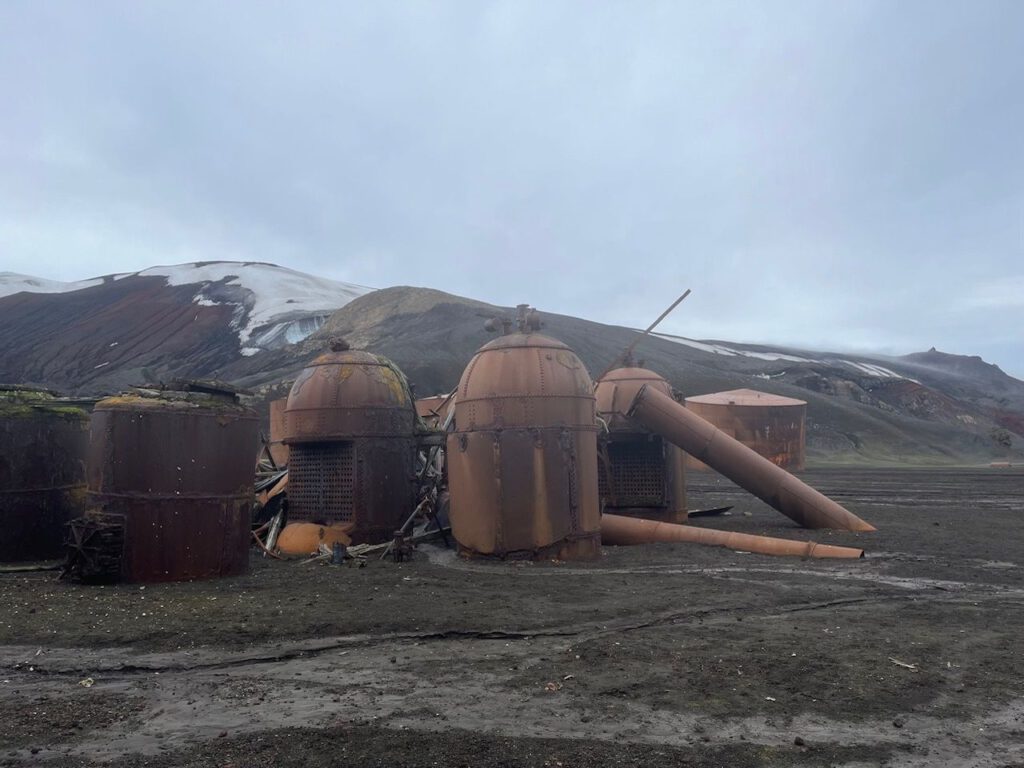
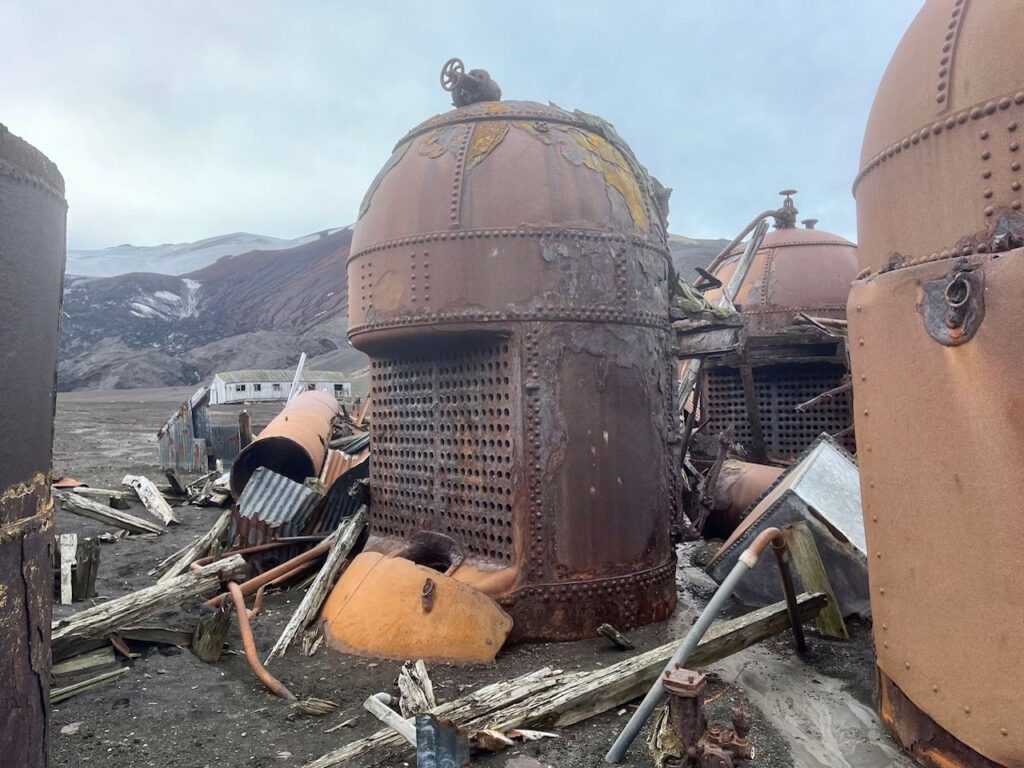
Unfortunately (or fortunately for the landscape and flora), the surrounding hills and mountains are a protected area. We would have loved to have climbed them to get a view of the bay and the crater lake from above. The landscape here is barren, but for my taste very colorful: the black and white of volcanic rock and glaciers is mixed with lush green (lichens, mosses) and a velvety dark red-black in some places – stone or ash, it’s impossible to tell from a distance.
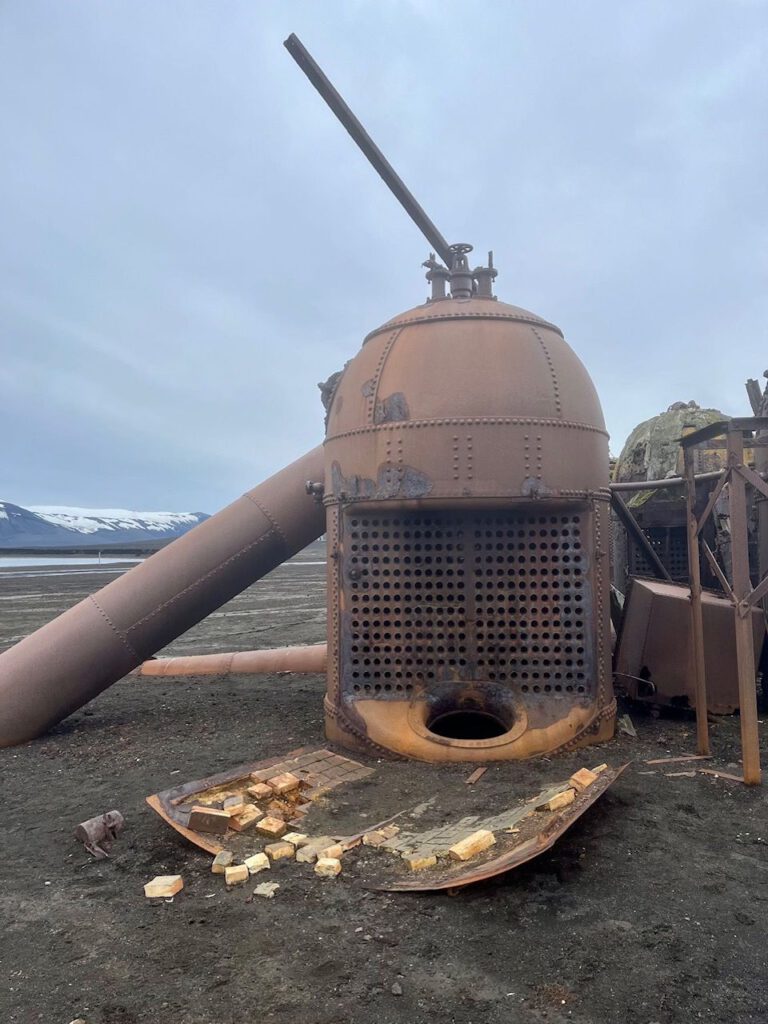
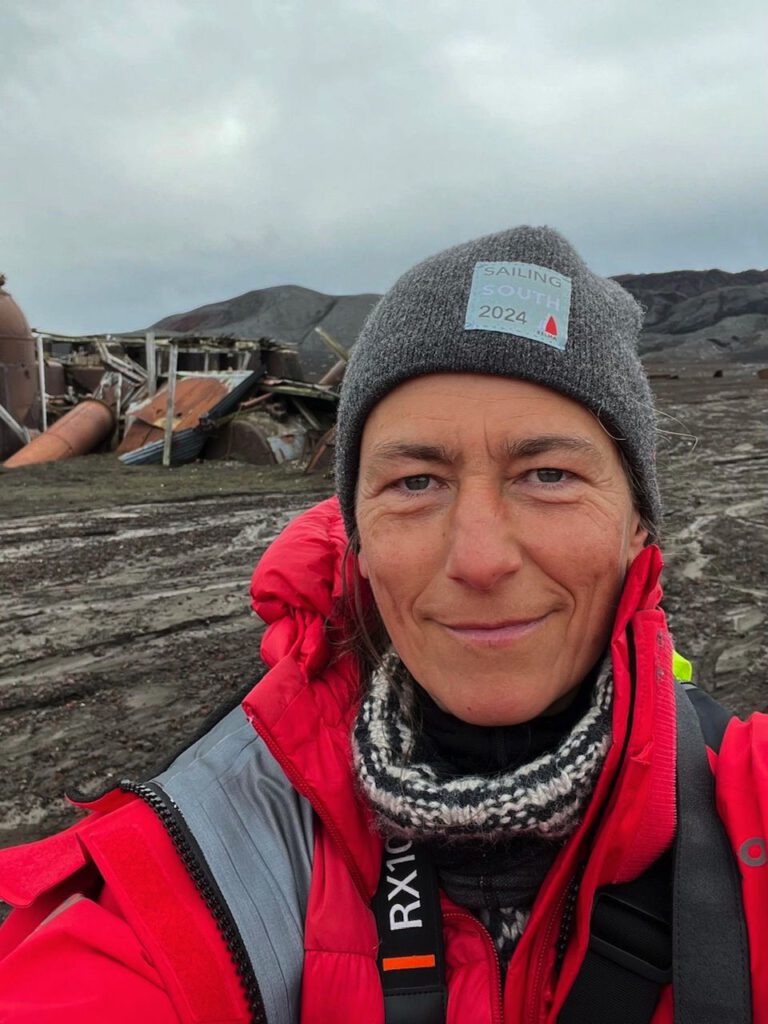

It is exciting and fun to wander through the past in this extraordinary place, this very special landscape, and time flies by.
Back on board the Selma, we return to our tried and tested anchorage in Telephone Bay. After another quiet and starry night, we set off the next morning in the direction of Elephant Island.